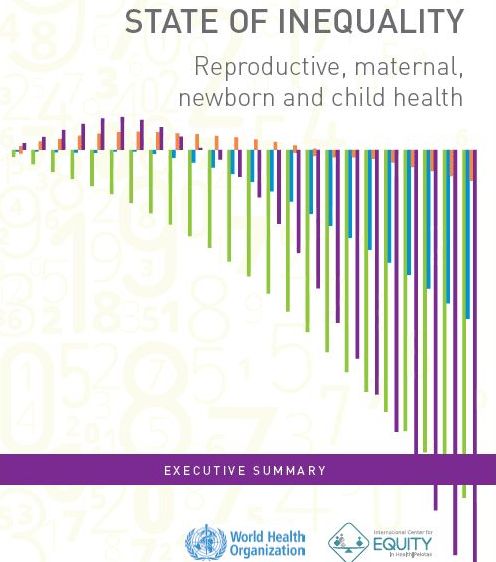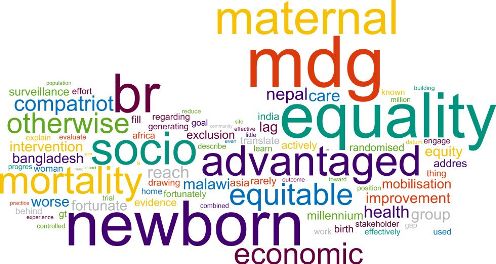
The
report focuses attention on reducing inequalities between subgroups of the
population, using interactive ways for users to explore health data. The
objective of this report is to showcase best practices in reporting the state
of inequality in low-and middle-income countries using high-quality data, sound
and transparent analysis methods, and user-oriented, comprehensive reporting.
The
state of inequality reports on reproductive, maternal, newborn and child health
report delivers both promising and disappointing messages about the situation
in low-and middle-income countries. On the one hand, within-country
inequalities have narrowed, with a tendency for national improvements driven by
faster improvements in disadvantaged subgroups. In certain indicators and
countries, these improvements have been substantial. On the other hand,
however, inequalities still persist in most reproductive, maternal, newborn,
and child health (RMNCH) indicators. The extent of within-country inequality
differed by dimension of inequality and by country, country income group and
geographical region. There is still much progress to be made in reducing
inequalities in RMNCH.

Maternal
health intervention indicators demonstrated pronounced within-country inequalities.
The largest gaps in coverage-between the richest and poorest, the most and
least educated, and urban and rural areas- were reported for births attended by
skilled health personnel, followed by antenatal care coverage (at least four
visits). Inequalities were also reported in antenatal care coverage (at least
one visit), though to a lesser extent than the two above-mentioned maternal
health interventions.
The
proportion of births attended by skilled health personnel differed by up to 80
percentage points between the richest and poorest subgroups; this difference
was 37 percentage points or higher in half of countries.
In
half countries, antenatal care coverage (at least four visits) differed by at
least 25 percentage points between the most and least educated, and the richest
and poorest.
Reproductive
health intervention indicators also indicated a situation of inequality.
The
use of modern contraception was at least twice as high among women with secondary
schooling or higher than among women with no education in nearly half of
countries.
Immunization
indicators demonstrated low to moderate coverage gaps across different
dimensions of inequality.
Countries
demonstrated no – or very low levels of – sex- related inequality in
immunization coverage. The difference in immunization coverage between boys and
girls did not exceed 10 percentage points in any study country.
Looking
at BCG, polio, measles and DTP3 immunization among one-year-olds, in each case
there was a difference of less than 5 percentage points between coverage in
rural and urban areas in half of countries.
Over
one third of countries reported a gap of less than 5 percentage points between
BCG immunization coverage in the richest and poorest subgroups.
Indicators
related to care-seeking for sick children showed higher inequality in
care-seeking for pneumonia symptoms than for diarrhea. There were divergent
patterns across countries in the level of inequality in the early initiation of
breastfeeding.
In
half of countries, there was as least an 18 percentage point gap in
care-seeking for children with pneumonia symptoms between the poorest and
richest subgroups.
About
the same number of countries reported pro-poor inequality in early initiation
of breastfeeding (higher prevalence of breastfeeding in the poorest than in the
richest subgroup) as reported pro-rich inequality (higher prevalence in the
richest than in the poorest subgroup). Overall, there was no prevailing pattern
in economic-related inequality in breastfeeding practices across countries.
While
current national averages and improvements over time are important indications
of progress on a global level, reporting inequalities within countries reveals
the different experiences of rural and urban residents, the poor and the rich,
the educated and non-educated, and females and males. Monitoring the state of
inequality, which includes tracking the change over time, unravels how progress
in national averages is realized by population subgroups.
Health
inequality monitoring is an essential step towards health equity. It has broad
applications and can be conducted across diverse health topics. Applying the
best practices in health inequality monitoring presents an opportunity to share
the state of inequality with stakeholders, indicate areas in need of
improvement and track progress over time.
To
read the full report, please click here
Dr.
Shima Naghavi, Director of International Affairs